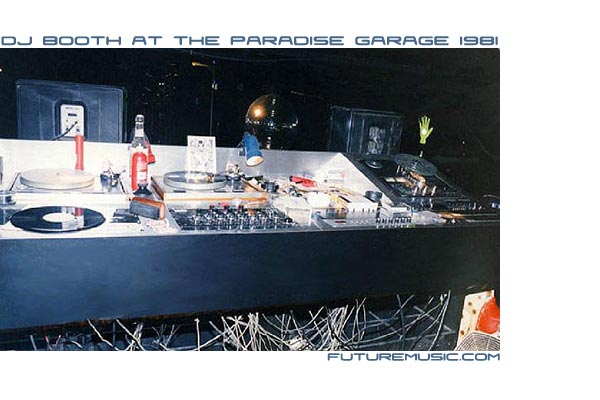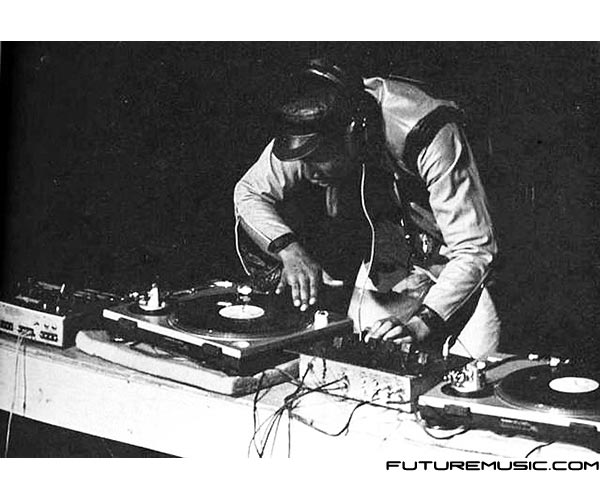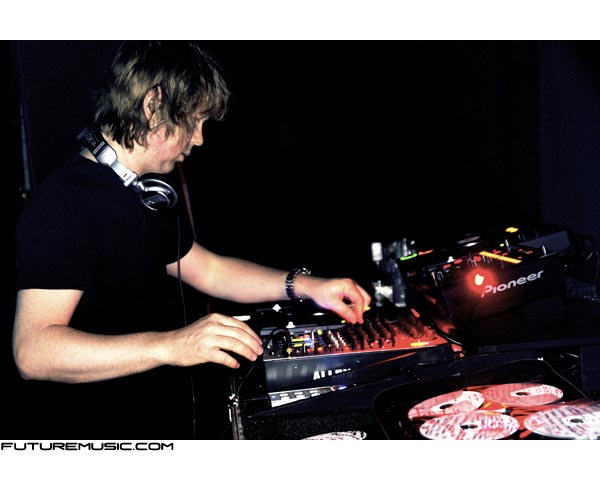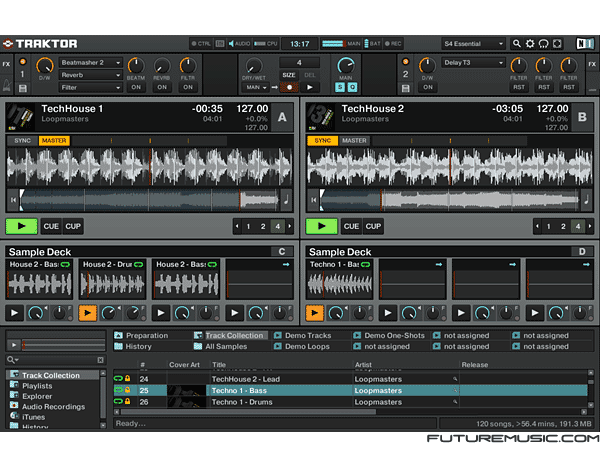Is Technology Good For The Craft Of DJing?
By Dan Brotman, Editor-In-Chief
When DJs first started mixing music to create an uninterrupted flow of music, they didn’t have a lot of tools at their disposal. At first, mixes were created by splicing reel-to-reel tapes together. This painstaking process took hours and the “transitions” were not much more than clever “jump cuts” at opportune times during a musical passage. With the advent of using two turntables, and more importantly pitch control, mixing took transitions to a whole new level. When this technology debuted, it didn’t fully understand the ramifications it would have on music, dancing and nightlife. “DJs” began to experiment with the pitch control to modulate the speed of the records in order to create seamless transitions, which led to “Club” versions of popular chart hits to include minimal intros/outros that facilitated this technique.

What was needed for this setup? Two pitch controlled turntables, a mixer, a pair of headphones, a monitor, a PA, and, of course, a crate of choice 12″ records. A home stereo “hi-fi” often replaced the monitor and PA in bedroom or backyard setups, so while the cost of entry wasn’t cheap, it was certainly doable. And this was where the technology remained for years, no decades. Sure better versions of the industry-standard Technics 1200 debuted, better mixers with more channels, increased fidelity, additional I/O, and even effects came into play. Needles evolved. But the same elements were always there…for years. Even though the technology remained mostly static, the music evolved.
Faced with these limitations – I say limitations now, because then it wasn’t limitations, it was just the tools at hand – DJs innovated. Producers of dance music innovated. They didn’t look at the two decks and a mixer as constraints, they looked at the combination as an instrument, and how can we play this instrument better. Hip-Hop DJs invented ‘scratching’ techniques – flipping the entire notion of being delicate with records and needles on its head to create mind-blowing sonic mayhem. Mixing DJs, always striving for even smoother, more musical transitions, developed intricate EQ techniques and harmonic mixing. Some started adding a third turntable to infuse more energy into their mixes. However, no matter what DJs were doing at this time, every single one of them was honing their craft.

Scratching, beatmatching, EQing, pitch control, ear training were all part of the craft of DJing. And it was often this craft that separated the men from the boys. Practicing your craft lead to developing your own artistic style. Some DJs were better at one aspect of their craft than others. Hip-Hop took the entire affair to the extreme with DJ Battles, that pitted one DJ against another in a mano-a-mano dust up of who was almost the better “athlete.” All based on craft due to the restrictions of the basic DJ setup. But things change…
The first shot across the bow was the Pioneer CDJ-1000. The CDJ was the CD player equivalent of the venerable Technics 1200. Smaller, lighter it had all the features of the vinyl turntable with the ability to play the easily portable CD. At first, there was a huge backlash against the innovative new product: “DJ with CDs? Are you kidding me?? Ewwwww!” Even pulling a CD from your bag resulted in getting the “stink eye” from hipsters and vinyl purists who thought DJing with anything but records was sacrilege. But top, globe-trotting DJs, exhausted from carting heavy 12″ inch record boxes from gig to gig, celebrated the innovation and instantly adapted. Now just a billfold of CDs could be tossed into a carry-on, a couple of CDJs on the rider and John Digweed and others could sashay into a gig with their lower-back intact. With the top DJs moving to the new format, and demanding it at the high-profile nightlife establishments, clubs began to purchase the new players in record numbers and Pioneer became a standard, the dream of any manufacturer.

However, while the CDJ facilitated the move from vinyl to the CD format, it still maintained the basic feature set of the 1200. Thus, the same mechanics used to mix tracks via turntables were maintained, albeit in slightly different methodology. The CDJ had pitch control, the ability to push/pull a playing CD, some scratching capability and other vinyl attributes. But the difference maker and what could have possibly been the one thing to open up everyone’s mind to the possibilities of the future were Cue points. The ability to instantly jump from one section of a track to another. This showcased a simple benefit of digital technology. If you could jump from one section to another, what else could digital do?

Cue points demonstrated another telling feature of digital, the ability to leapfrog over craft. Like in the Matrix when Neo is first learning martial arts and all he needs to do is download the “Kung Fu” program to his brain to become a master, the digital DJ simply needed to program a few cue points to instantly be able to Beat Juggle. On vinyl, a master beat juggler would have to spend hours upon hours, not only marking his vinyl with stickers to visually show entry points, but also learning how to athletically manipulate the record, the crossfader, the second record, the crossfader, the first record and so on. Real craft. But now, thanks to digital technology, a DJ could easily beat juggle with more precision and speed than a master turntablist.
Sure, watching a DJ punch cue point buttons on a CDJ, isn’t much to witness – unlike a vinyl turntablist, which is pure, visceral thrill – but that’s not the point. Digital demonstrated that it could bypass the exorbitant time it took to learn a painstaking long process. And this was the beginning of the end. The craft of traditional DJing would never recover.
Now for the sake of this argument, I’m not going to get into the question of song selection, a huge component of quality DJing. I’m simply going to focus on the impact of technology on DJing and whether this is a good thing, a bad thing or neither. The pace of new technology being infused into every single thing you use in your daily life is almost overwhelming. Refrigerators that talk to you, televisions thinner than framed paintings, sneakers that track where, how far and how fast you’ve jogged, and so on. Now look at what technology has done to the art of DJing? New hardware, new software, new software inside new hardware, new mixers, DVS systems, DJ-specific audio interfaces, new digital media players, and DJ MIDI controllers…FutureMusic literally gets an announcement about a new controller every week.
We can barely keep up with it and it’s our job. What is a DJ to do?
The pace of new DJ equipment coming out is staggering. I used to think the rate of Apple deploying new iPods was crazy, but companies like Native Instruments are deploying new DJ products every few months. Whether it’s a new version of their mixing software Traktor, to a new controller, it’s mind-blowing. Fact is, there are several DJ oriented companies like Native that are churning out products at an unprecedented velocity. At this point in time, there are currently so many options available for a new DJ to contend, it’s paralyzing. Where you you even start?

What’s worse, say you decide to buy into the aforementioned Native Instruments Traktor ecosystem, after considerable research, polling of friends and evaluation of cost. You purchase the extensive, powerful software, the excellent S4 controller and then take the time to learn the products. Maybe you buy the 374 page Traktor 2 Bible, watch a ton of YouTube tutorial videos and join the forums to get some tips and tricks…by the time you finally get your arms around the action, Native comes out with a new controller, a new software version and probably some other insanely great products that you need to buy and then learn how to use. Instead of spending your time honing your craft once you’ve mastered your tools, you’re learning how to use your tools all over again. And the Merry-Go-Round just doesn’t stop, in fact, it continues to get faster. Now I’m just citing Native Instruments, but this is the same scenario if you go with Numark’s quality controllers and Serato Itch or several other options now available.
Thanks to all this technology, and DJ Endo’s Maschine mapping for Traktor (as an example), I can cue up a track to the first beat, match tempos and start a track with a single button click. What used to take me a couple of minutes with vinyl now takes one second. No technique, no mechanics, just press a button and you’re rocking. The “Post Beatmatching” era is in full swing and it’s opened up DJing to entirely different realms of effects, beat juggling, sampling, and beyond. With more time on their hands, thanks to instant beatmatching, DJs and literally going bananas with all the options, which probably has a lot to do with Dubstep’s kinetic, A.D.D. popularity right now among other production advances.
The biggest casualty in all this is the ability for a DJ to walk into any venue and rock the house. Whether you were holding court at a backyard BBQ or at Fabric, all you needed was some records and your craft. Every DJ rig was basically the same, all you had to do is pick some tasty choons and make sure the ladies were shaking it on the dance floor. The onslaught of technology has virtually eliminated the beauty of this potential, capability and power.
Thus, the question remains, is all this technology a good thing or a bad thing for the art of DJing. For those of you reading this who have been in the scene for a long time, are the DJ sets of yesteryear better than what you’re hearing today? Worse? Is too much technology a bad thing? Or do you think technology is finally giving DJs unlimited musical freedom?
I, for one, could use a bit of a reprieve…well, at least until MusikMesse.






